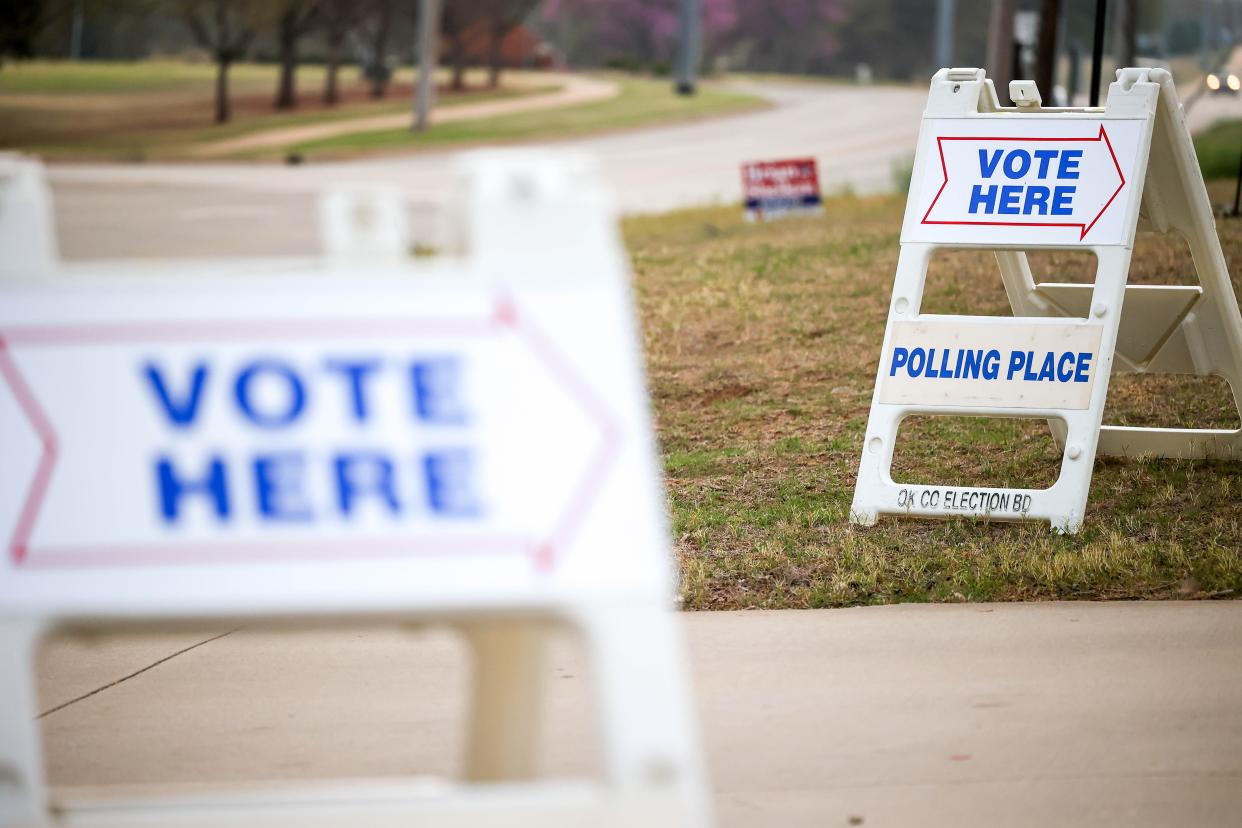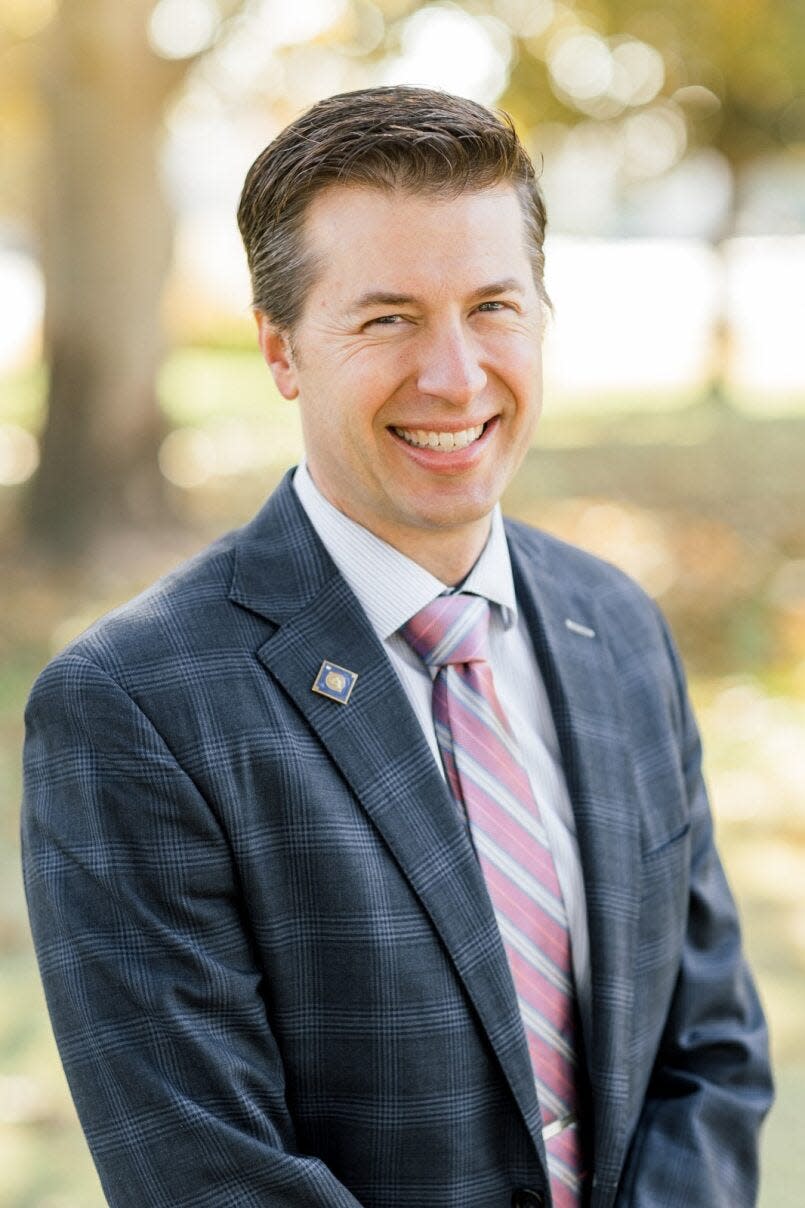Why shrinking Democratic voter registration in Oklahoma is a reason for lower raw vote count

- Oops!Something went wrong.Please try again later.
After reading a few news articles about the lower voter turnout in the Democratic Party’s Presidential Preferential Primary in Oklahoma on March 5, I wanted to place this election in proper historical context.
The most important thing to remember is that voter turnout will always be low if there is not an operational campaign that activates lower-propensity voters. This holds true regardless of party or election.
Not having a competitive election generally means not having an active campaign to engage voters. This is typical in party primaries for an incumbent president seeking re-election and was true for President Joe Biden in 2024.
Even though the Democratic electorate’s 14.1% voter turnout was certainly low for President Biden’s re-election primary in 2024, it was actually better than the 12% of registered party voters that came out to vote when President Barack Obama was on the primary ballot for re-election in 2012 or the 9.2% of registered Republican voters who showed up for President George W. Bush’s re-election primary in 2004.
More: We have the most 'ineffective Congress in history.' It's holding Oklahoma back.
The long-term trend of shrinking Democratic voter registration in Oklahoma is another reason for the lower raw vote count. In 1988, the first election after Oklahoma switched from a caucus system to a presidential primary, nearly 67% of voters in Oklahoma were registered as Democrats and only 30% were registered as Republicans.
Fast-forward 36 years later to 2024 and only 28% of voters are registered Democrats with nearly 52% now Republicans. This means that in Oklahoma’s closed primary system, the number of active Democratic voters is dramatically lower than the number of voters who can participate in the Republican primary.
How Oklahoma's political makeup has changed
A unique product of Oklahoma’s political history is the number of predominantly older, conservative, rural voters who originally registered as Democrats back in the 1960s, ‘70s and ‘80s. The political reality of the closed primary system and the overwhelming Democratic registration advantage of that era made it pointless for them to register as Republicans if they wanted to participate in elections that were settled in the partisan primary. These voters were essentially “Democrats in Name Only,” or DINOs, as we’ll call them.
In primary elections for federal office, depending upon the candidate mix, DINO voters typically either supported a candidate not perceived as a “national” Democrat or instead purposely voted for the least electable Democrat for the general election before deserting the ticket to vote for the Republican nominee in November.
At the presidential primary level, this rural, conservative DINO phenomenon has still manifested itself in several ways over the last 20 years. In 2004, former general Wesley Clark scored his only primary victory in Oklahoma after being perceived as the least “national” Democrat. In 2016, Bernie Sanders was able to combine his support from progressives with a very strong anti-Hillary Clinton rural vote to cruise to an unexpectedly large 10-point win in the Sooner State.
When President Obama ran for re-election in 2012, he did not have any credible or well-known opposition in the primaries. However, running against four unknown primary challengers in Oklahoma, he still lost 14 rural western and southeastern counties and had very narrow plurality victories in most of the non-urban counties. Buoyed by his 81% and 76% supermajority victories in Oklahoma and Tulsa counties respectively, President Obama’s statewide margin of victory was an anemic 57%. That is practically unheard of for an incumbent president with no real opposition.
The vestiges of this DINO effect were still present in 2024, but much less noticeable. President Biden, running for re-election with no real primary opposition, only lost one rural county. While his margins in many rural counties were still quite depressed, they were much higher than President Obama’s were in 2012 so that after factoring in the 82% and 80% supermajorities in the two most populous counties, President Biden’s statewide majority was a much more respectable 73%.
How do you get Oklahomans to the polls?
Here's what all this tells us: For the foreseeable future, the number of voters participating in the Democratic presidential primary will be vastly less than those participating in the Republican primary as our state’s voter registration is now mostly in sync with the partisan political realignment that has occurred over the past 40 years.
Also, today’s Democratic primary electorate is much more likely to stick with their party nominees in general elections.
Finally, regardless of party, if people are actively campaigned to, they are much more likely to vote. I expect that competitive presidential primaries in both parties in 2028 will once again dramatically increase the turnout percentages from where they were in 2024.

Jeff Berrong, of Weatherford, a former staffer for former U.S. Rep Dan Boren and serves as chair of the Oklahoma Policy Institute’s board of directors.
This article originally appeared on Oklahoman: Oklahoma’s 2024 Democratic presidential primary in perspective

